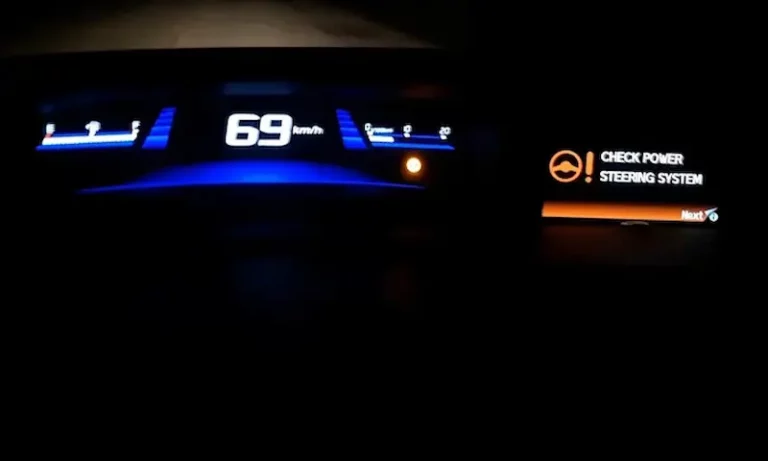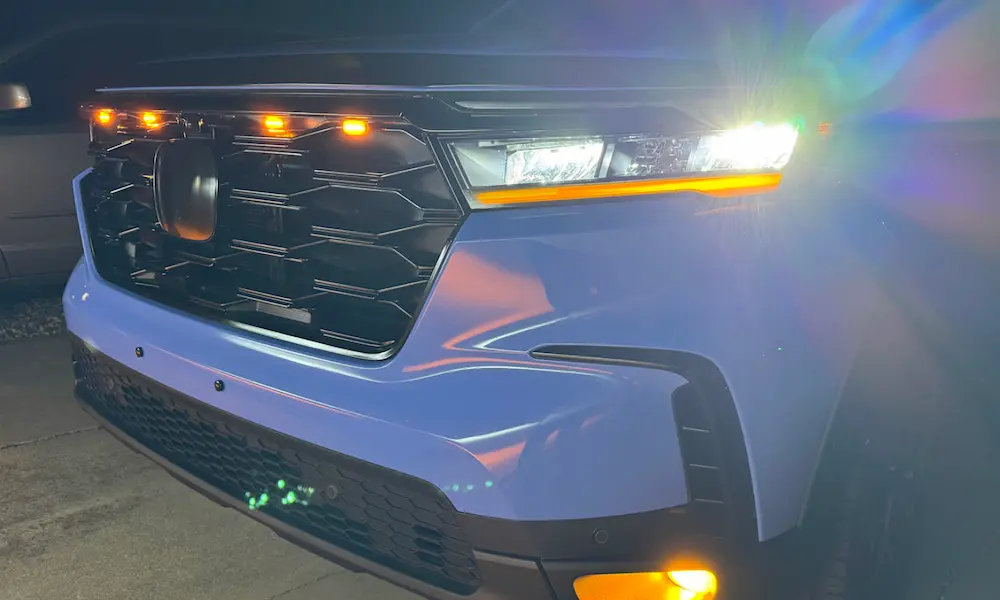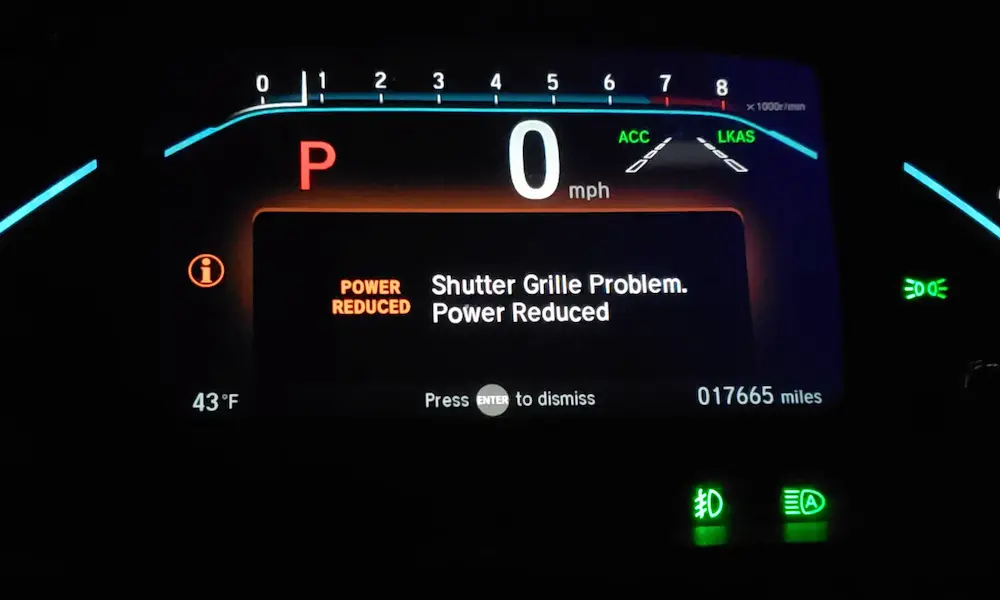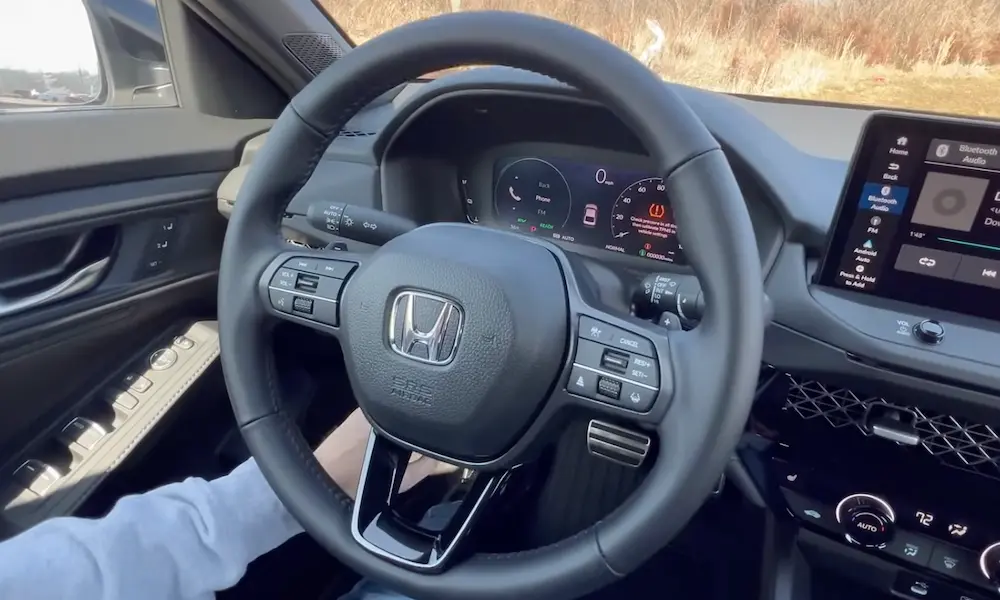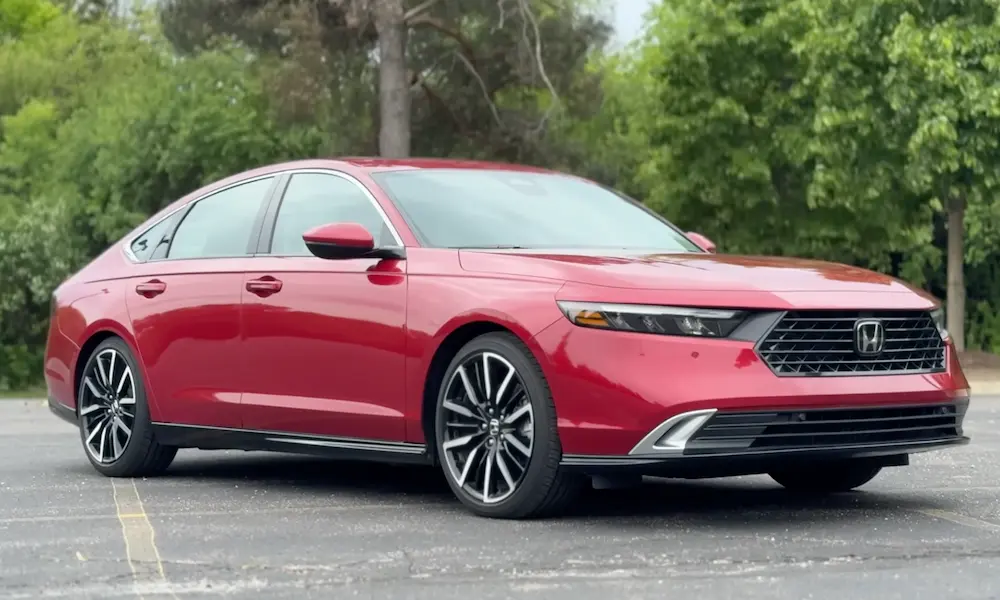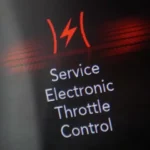When the Honda Civic Check Power Steering System warning comes up, it shows something is wrong with the steering system.
In most cases, when the warning comes up, the steering becomes stiff and difficult to steer. In other cases, the steering may work perfectly. The symptoms depend on what the cause may be.
Once you notice this issue, ensure a proper diagnosis and fix the problem.
What is Honda Civic Check Power Steering System?
The Honda Civic Check Power Steering System is a warning that tells the driver of a problem with the power steering system before disabling the system. The warning may come as a warning message or just a warning light depending on the model of the Honda Civic you are using.
In addition, the warning message mostly comes up with Honda Civic cars that use Electric Power Steering (EPS).
EPS uses an electric motor that aids the driver in turning the steering wheel. The electric motor replaces the hydraulic power steering. Rather than relying on the hydraulic system, the motor gets electric current from its electrical systems.
Also, the EPS system uses some sensors that it communicates with the engine control unit (ECU). The sensor used by the EPS system includes the following.
1. Torque sensor
This sensor monitors the torque the driver applies to the steering wheel and supplies the information to the ECU.
2. Steering angle sensor
The steering angle sensor monitors the position where the driver will be steering. It then allows the ECU to match the wheel with the vehicle’s wheels.
3. Pressure Switch Sensor (PSS)
PSS monitors the power steering load, converted into a ranging outpost load.
The EPS system uses the sensors mentioned above to adjust the steering settings based on speed, steering angle, and more.
When there is an issue with any of the sensors, it could affect the way the EPS system works. As a result, the warning message “check power steering system” or the power steering warning light could come on.
Also, other factors could cause the warning, like, electrical issues, damaged steering internal components, and more.
Causes of Honda Civic Check Power Steering System
The major cause of a “check power steering system” warning in an EPS system is damaged sensors and electrical problems. However, other factors can cause the warning to come up.
Some common causes of a “check power steering system” warning include the following.
1. Damaged sensors
The EPS system uses three major sensors: the torque sensor, the steering angle sensor and the PSS. All the sensors work together to ensure that the EPS system functions as it should.
When any of the sensors are damaged, the ECU will not get the necessary information that would be useful for the EPS to function. It could lead to the system malfunctioning, and in some cases, ECU could turn off the system.
Issues with the sensor could be dirt or contamination, corroded wiring, broken sensor house and more.
2. Damaged internal components of the system
Damaged internal steering systems components, like the rack and pinion, could also trigger a warning message. The steering system comprises many components that all work together to ensure that the steering can control the car smoothly.
There is the steering rack which converts the rotation of the steering wheel into lateral movement, which is left or right. Also, the tie rods link the steering to the wheels and ensure proper alignment.
In the EPS system, the electric motor is responsible for assisting with the vehicle’s steering.
When all these components get damaged, the steering system could stop working. Once this happens, the steering system is disabled, and the warning message “check power steering system” will come up.
3. Blown fuse
When the fuse of the EPS system gets blown, it could hinder the electric supply to the system.
The fuse protects the electrical circuit from excessive current. When too much current flows into the fuse, the fuse automatically stops the current from going to the circuit; once this happens, the fuse is damaged instead of the circuit.
Once there is any damage to the fuse, a replacement must be done before the current can flow back into the system.
4. Wiring issue
Damages on the wire, like corrosion and disconnection, would hinder current flow to the steering. Also, damages to the wiring connection would hinder communication between the sensors, ECU and the steering system.
Corrosion of the wire associated with the steering system will slow down the current flow. In this case, the system will receive little or no current, leading to a complete stop in the system functions.
5. Failing ECU
The ECU is responsible for monitoring and controlling the car’s steering system and many other systems. If the ECU fails, it will affect the steering and how it functions.
Sometimes, the ECU could trigger false warning lights and messages when the system works fine.
How to fix a Honda Civic Check Power Steering System
The first step to fix a “check power steering system” is to determine the warning message’s cause. You can do this with the help of an OBD2 scan tool. You only need to scan for failing parts of the steering system and sensors.
You can also physically inspect the parts of the steering system. This method could be stressful but can be very efficient.
Below are ways to fix a “check power steering system” warning message.
1. Replace damaged sensors
You can find the exact sensor that is damaged using a scan tool. Once you find the exact damaged sensor, locate it in the vehicle. You can do this with the help of a scan tool.
Once you can find the sensor, inspect it; sometimes, dirt or other contaminant could hinder the sensor from working properly. If you cannot find any damage to the sensor and wiring connection, clean it properly and install it back into the vehicle.
If the sensor is damaged, you need to replace it with the exact type of sensor that you are taking out.
2. Inspect and fix damaged internal components
Inspecting and fixing internal components of the steering system may require professional help. To be able to do this, you need good mechanical knowledge.
3. Replace the damaged fuse
Using the owner’s manual, find the exact fuse for the EPS system. You can find the fuse in the box under the hood on the driver’s side. Once you find the fuse, remove it and inspect for damages like signs of burning.
If the fuse is damaged, replace it with the same type of fuse as the damaged one.
4. Replace damaged wires
Also, in the owner’s manual, you will find a detailed diagram of the wiring connection of the vehicle. Find the wires responsible for the EPS system and inspect them.
Check the wires for damages like corrosion, broken and exposed wire. If you find any, replace the wires immediately. Do not try to manage to fix the already damaged wire.
5. Fix the ECU problem
Many issues could affect the ECU you have. The ECU could face a software issue, minor malfunction or complete failure.
If the issue is a simple malfunction, resetting the ECU could bring it back to work normally. You can use a scan tool to reset it or disconnect the battery for a while.
However, the system needs reprogramming if the problem is a software issue. Reprogramming the software requires advanced tools that only professionals would have.
A complete ECU failure means the module needs to be changed. It is best you also leave this aspect to experts.
Final Thoughts
The steering system is important to ensure proper vehicle control while driving. You must take issues like a “check power steering system” seriously. It would help if you learned how to diagnose the problem’s cause properly and what to do next after knowing the cause.

